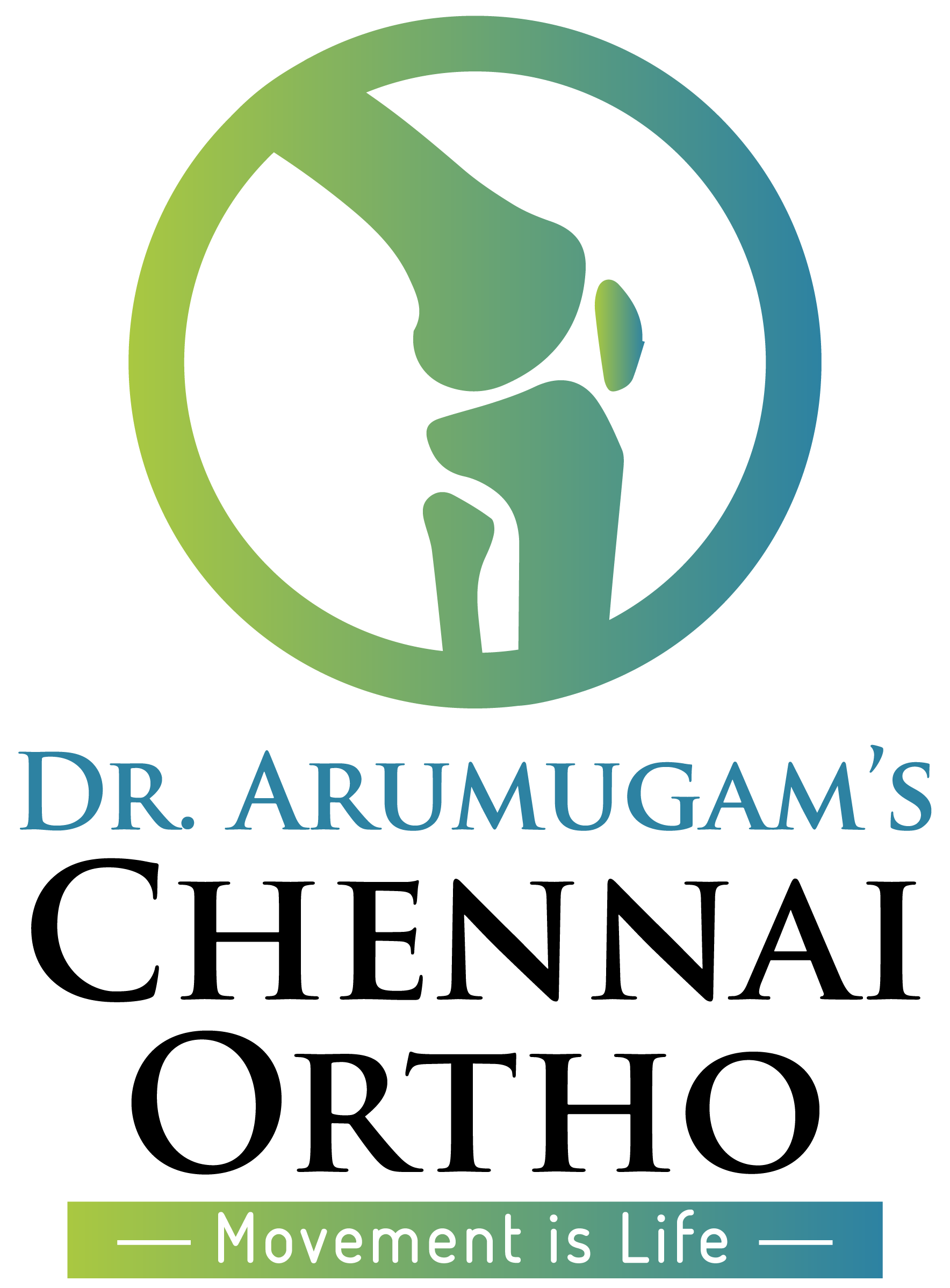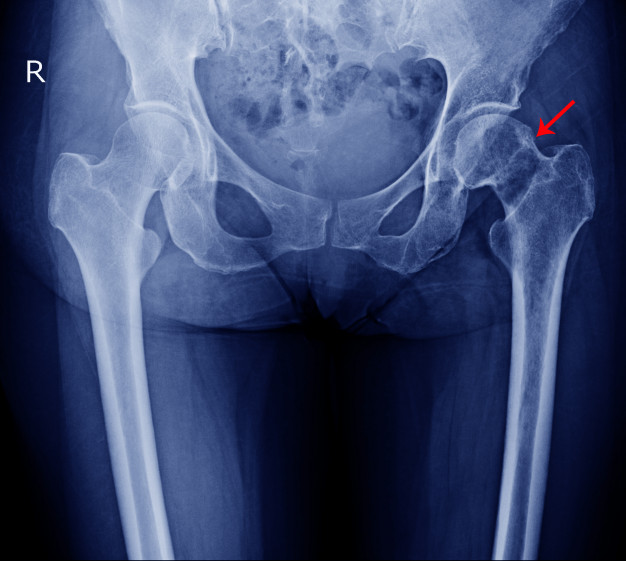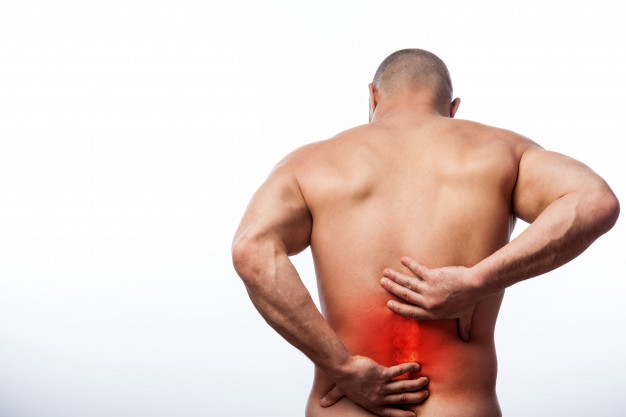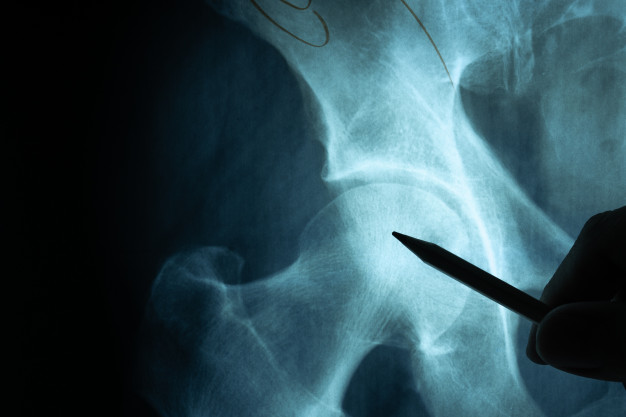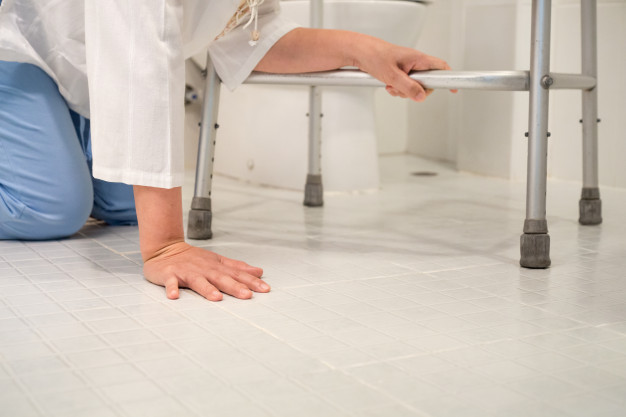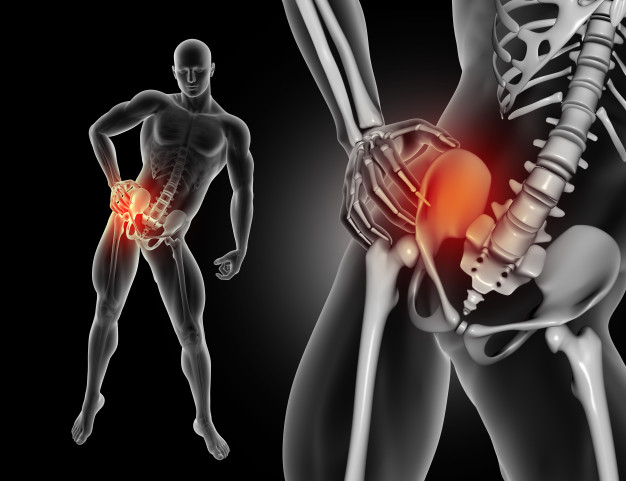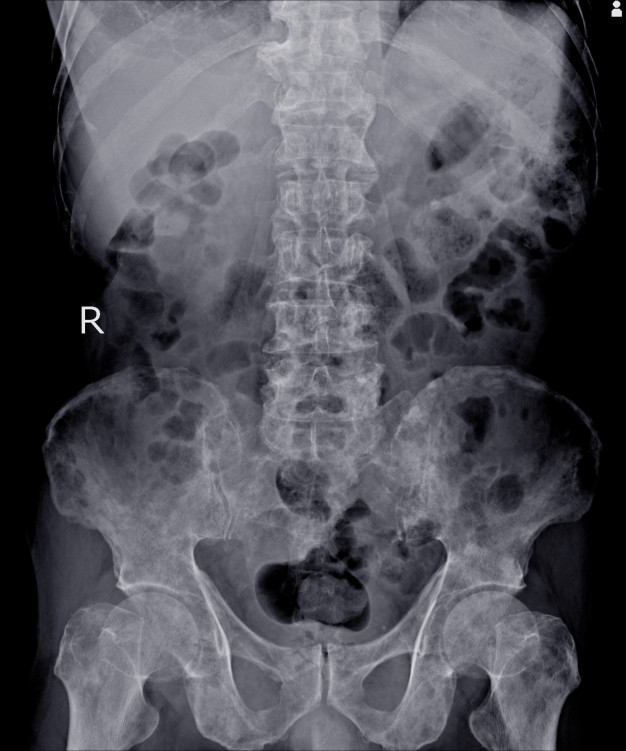
Dr. S Arumugam has operated on more than 3000 patients in his career and helped change the lives of many more. His team of anesthesiologists and nurses are thoroughly equipped to care for patients with hip conditions.
Some of the most common hip conditions that the doctor deals with on a regular basis are:
- Osteoarthritis of hip
- Hip Rheumatoid Arthritis
- Osteonecrosis
- Hip fracture
- Hip Bone Tumors
- Reconstruction of broken hip and pelvis
Osteoarthritis of a Hip
What is Hip Osteoarthritis?
Osteoarthritis of the hip is a degenerative disease that worsens with time. It’s caused when the soft-tissue called cartilage that’s present between the bones starts wearing away and starts causing pain.
The bones start rubbing on each other and cause excruciating pain which prevents people from doing the simplest of activities like bending down to tie their shoelaces. Osteoarthritis is more common amongst the elderly population but younger people might get it too.
Pain and stiffness in the hip joints are the most common symptoms of hip osteoarthritis. Since the joints wear away more with time because of friction, the pain from osteoarthritis worsens with time.
Some of the common symptoms of osteoarthritis include:
- Pain that starts from the groin area and spreads up to the thigh or knees.
- Pain that increases with intense physical activity.
- Difficulty in walking and bending because of the stiffness in hip joints.
- The hip joint locks and you hear a grinding noise (crepitus) that’s caused due to loose pieces of cartilage and other tissues interfering with the smooth movement of the hip.
- Great reduction in the range of motion. People affected by hip osteoarthritis cannot walk even short distances because of the pain caused by their joints.
How is Hip Osteoarthritis diagnosed?
Your doctor will look for tenderness around the hips, check for a grinding noise, and apply pressure around the hip to localize your pain.
Imaging Tests:
X-ray is a straight-forward way of detecting hip osteoarthritis because it shows the damage caused due to the bones. Other imaging tests include MRIs and CT scans.
How is Hip Osteoarthritis treated?
The treatment your doctor prescribes may be surgical or non-surgical in nature depending on the stage your arthritis is in.
If you’re in an early stage of arthritis then you can cure arthritis with changes in your lifestyle and medication.
If your arthritis is at an advanced stage, then your doctor will prescribe an osteotomy, hip resurfacing or total hip replacement to help you get rid of the pain.
Hip Rheumatoid Arthritis
What is Hip Rheumatoid Arthritis ?
Rheumatoid Arthritis (RA) is caused when the immune system attacks the joints and causes inflammation. It’s an example of an auto-immune disorder.
Rheumatoid Arthritis affects millions around the world every year.
Rheumatoid Arthritis commonly affects wrists. But it also affects bigger joints like knee, hip, shoulder, etc.
It causes inflammation and stiffness in the hips and causes extreme discomfort, especially in the morning. People suffering from Rheumatoid Arthritis (RA) are also prone to getting fevers as a side-effect of an overly-active immune system.
Who is affected by Rheumatoid Arthritis in the hips?
Unlike Osteoarthritis of the hips that affects a majority of the elderly population, Rheumatoid Arthritis can affect any age group because it is an auto-immune disorder.
But it’s most common in people who’ve crossed 30 years of age. Women are more prone to getting Rheumatoid arthritis than men.
Although the real cause of Rheumatoid Arthritis is unknown, some of the factors that increase the risk for Rheumatoid Arthritis include:
- Environment
- Genetics
- Harmons
What are the symptoms of Rheumatoid Arthritis in the hips?
- Pain in your hips that prevents you from doing simple activities like climbing stairs, walking, jogging, etc.
- Pain near the thigh and groin area apart from pain in the hips.
- Severe inflammation in and near the joint area.
- Occasional fevers.
- Periods where symptoms subside and other times when symptoms and pain become much worse.
- Other symptoms also include loss of appetite and anaemia.
How is Rheumatoid Arthritis diagnosed?
How is Rheumatoid Arthritis diagnosed?
While conducting a physical examination, your doctor will ask you if you have a family history and question you about other medical conditions to determine if you have Rheumatoid Arthritis in your hips.
Since Rheumatoid Arthritis is also similar to other diseases like lupus and fibromyalgia, it’s hard to detect. You’ll be asked to take blood tests to determine if you have this condition.
Osteonecrosis
What is an Osteonecrosis?
Osteonecrosis also called avascular necrosis takes place when the blood supply to the head of the thigh bone is disrupted.
Our joints need a continuous blood supply to stay healthy and when this doesn’t happen, the hip joint might be destroyed and also cause severe arthritis in the hip.
Osteonecrosis can affect any bone in the body, but the hip joint is most commonly affected by this condition. Both sides of the hip are affected by this disease and it affects more than 20,000 people every year.
Who gets affected by Osteonecrosis?
It’s not possible to determine what causes a lack of blood supply to the bones, but here are some risk factors that may lead to Osteonecrosis:
- Dislocation of the hip joint because of hip injuries that damage blood vessels and block the blood flow to the bones.
- Excessive consumption of alcohol leads to the production of cortisone which then leads to the lack of blood supply to the bones.
- Long term use of steroids. Many other conditions like rheumatoid arthritis require the consumption of steroids to help the patients cope with pain. Although we don’t know why steroids cause osteonecrosis, studies have discovered that there is a correlation between the two.
- Existing medical conditions like sickle-cell disease, Caisson disease, etc. also increase the risks of osteonecrosis.
What are the symptoms of Osteonecrosis?
Osteonecrosis begins with Initial pain in the hips that progresses to a dull throbbing ache in the groin and thigh area.
How is Osteonecrosis diagnosed?
How is osteonecrosis diagnosed?
Your doctor will prescribe imaging tests like X-rays and MRIs to check if you have osteonecrosis. X-rays will show how much of the bone is damaged or collapsed. MRI’s can detect osteonecrosis earlier than X-rays.
How is Osteonecrosis treated?
If the osteonecrosis is detected in the earlier stages, it can be alleviated by making changes to lifestyle, using crutches, and taking anti-inflammatory drugs. But if the osteonecrosis is in an advanced stage, then surgical methods may be the best choice to get relief from the inflammation. The surgical procedures include core decompression, bone and cartilage grafting, and total hip replacement.
Hip Fracture
What is a Hip Fracture?
Our hip joint is a ball and socket joint that consists of a thigh bone and pelvis. When a crack occurs in the top quarter of a thigh bone, a hip fracture is said to have occurred.
Most hip fractures require surgical procedures followed by physical therapy for complete recovery.
Hip fractures are most common among people aged above 65 as the risk for fracture increases after the age of 50.
Women are more prone to hip fractures because they tend to fall more and are also at an increased risk of osteoporosis.
Who is affected by Hip Fractures?
- Being underweight
- Not ingesting enough calcium and Vitamin D
- Having a history of osteoporosis (a disease caused due to porous bones)
- Not engaging in enough physical activity and sticking to a sedentary lifestyle
- Drinking excessive alcohol
- Smoking
Distance runners and ballet dancers are also at a risk for hip fractures because they develop thin cracks called stress fractures in their hips. If these cracks are not treated, they can grow bigger over time.
What are the symptoms of a Hip Fracture?
- Difficulty in getting up after a fall or to walk
- Excruciating pain near the groin region
- Inability to shift your body weight to your legs
- The area around the hip is bruised and swollen
- You feel like your injured leg has grown shorter
But to get a clearer picture and confirm the diagnosis, your doctor will order X-rays, MRIs or a CT scan. An MRI scan can show a crack in your hip better than X-rays and CT scans.
How is a Hip fracture treated?
Although most hip fractures require surgery, your doctor will take into account your age and physical condition before he starts treating the fracture.
He’ll also prescribe physical therapy for recovery after surgery.
Hip Tumor
What is Hip Tumor?
A Tumour is an uncontrolled growth of cells in our body. It can be benign or malignant. When the tumours keep growing with time, they form a lump of tissue or bones.
A malignant (cancerous) tumour might weaken the bones because the tissues around the bones become affected by it. Malignant tumour in the bones can be of two types:
Tumour that starts in the bones (primary bone cancer)
Tumour that starts in tissues and spreads to the bones (secondary bone cancer)
We don’t know what causes malignant tumours yet but there are various treatments available. Chemotherapy, radiation, and surgery are some of the treatment methods available to treat malignant tumours.
What are the symptoms of Hip Tumor?
- Patients with hip tumor experience a dull ache near the hip area.
- Night fevers and sweats
- Painless mass of lump near the hip area
- Injury to the hip area that might cause the tumor to start hurting
How is Hip Tumor Diagnosed?
Sometimes, fractures and other injuries resemble a tumour in the hip. So, your doctor will conduct a physical examination to check the range of motion and tenderness.
They’ll also ask you questions about your family history to determine if you have a tumor. You’ll also be asked to undertake biopsies and other imaging tests.
How can Hip Tumor be treated?
If your tumor is not cancerous, your doctor will simply monitor it periodically and prescribe some medication.
If your tumor is cancerous, a team of doctors will work on it to treat it effectively. The treatment will be based on the stage the tumor is in.
If the cancer is localized, it can be treated easily. But if the cancer has reached the metastatic stage where it spreads to other organs easily, it may be harder to cure.
Your doctor will prescribe radiation therapy and chemotherapy to treat malignant tumors.
